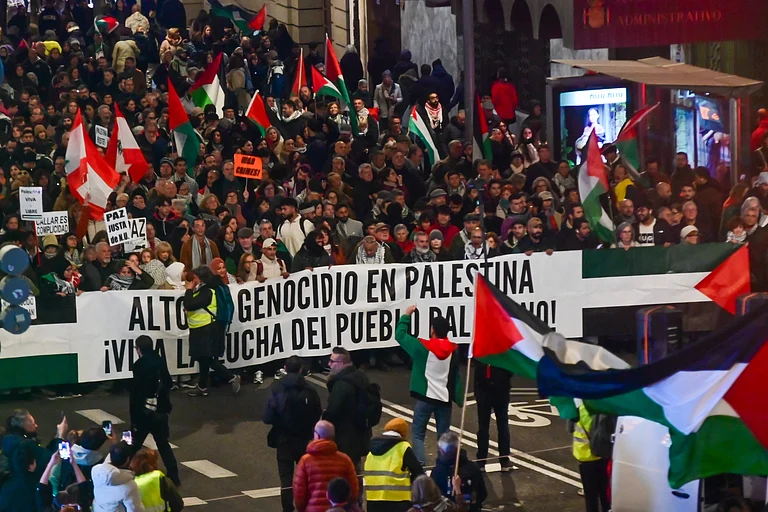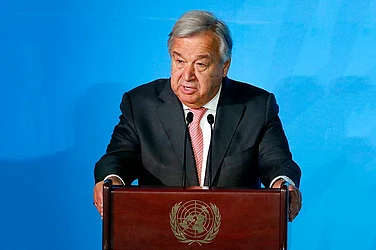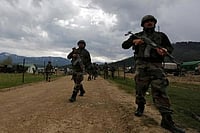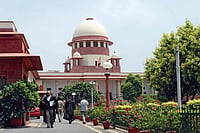I left Gaza on December 18 after spending five weeks in Khan Yunis. These were some of the most harrowing days I have lived through in my eight years of working as a doctor with MSF.
Entering Gaza was scary. Even though I was in Egypt for three weeks preparing for the Gaza mission, no one really knew what kind of security situation my team and I were going to face. We planned to go to Nasser Hospital in Khan Yunis in southern Gaza to support the staff there. But despite being in touch with people there, we had no way to really know how the situation was.
When we arrived, there were still plenty of staff members around since a majority of the attacks until then had mainly been focused in the north and Gaza City. Whilst lots of attacks had occurred in the South as well, Khan Yunis itself didn’t have to evacuate. However, the city was absorbing evacuees from Gaza City, which was putting a further strain on healthcare facilities.
When I arrived at Nasser hospital, I found a big IDP (Internally Displaced People) camp as most hospitals in Gaza are doubling up as shelters. When I reached, the hospital had already exceeded bed capacity by 200 per cent. By the time I left, they were at 350 per cent bed capacity.
Inside the hospital, it was impossible to know which patients were more critically injured or who needed what kind of treatment. Providing the required level of care was difficult due to the lack of resources. Finding space to treat patients was a challenge.
Doctors working in Gaza currently are facing choices that no doctor should face. Several times a day, during mass casualty incidents, they find themselves having to step over the bodies of dead and dying children to save other children who have a chance at survival but may not survive. In my time there, I had to face such a situation a few times. I recall one such day.
I was standing in the car park of the hospital when we heard an air strike close by. We knew that soon, many patients were going to arrive. As the ambulances headed off in the direction of the smoke, we headed to the emergency department to prepare. Just two or three minutes later, a sea of badly injured people started to arrive.
I was in the emergency department. Two children arrived on the same trolley; both badly injured, unconscious, and needing critical emergency care. We needed to take CT scans, but the machines were not working. We needed to find blood products, but the blood bank was struggling to find enough blood. Thankfully, we managed to find anaesthetic drugs, but these were not always available.
To be in such situations and to have seen the entire process from the start was difficult. Seeing and hearing the explosion, knowing that injured would be coming and then them arriving so quickly and having to treat these patients with limited resources in a resuscitation room full of badly injured, dead and dying children was one of the most brutal experiences of my medical career.
There were a few uplifting moments. One of those children that we worked on was a 12-year-old girl who remained unidentified for a couple of days. She had sustained severe injury to the lungs, some head injuries, and severe burns. We were able to resuscitate her and keep her alive until we could get her to an operating theatre. Later, she was moved to the ICU. Within a couple of days, the system of community identification that has been active in Gaza worked, and some of her family members came forward to identify her. We discharged her in a week and watched her go home. Or whatever may be left of it.
She was one of the children that we have been able to save. As a doctor, it makes me feel a little bit better that it was worthwhile trying to be there to help. But for how long can doctors sustain this? At the time of my exit, the hospital was overwhelmed with patients. It can accommodate about 230 patients on a normal day but when I left, there were about 680 patients. This means patients are lying on the floor in corridors, and are being treated on the floor in the emergency department.
The situation is pretty desperate even in the south, purported as the “safe zone”. The situation in Khan Yunis has become dire in the past five weeks. Each day, air strikes were getting closer to the hospitals.
In fact, on the last night of my time in Gaza, a portion of Nasser Hospital was also directly hit by some form of artillery. The bombing killed someone in the maternity unit and injured several others.
As the head of MSF’s medical team in Gaza, I am trying to build up some resilience. But many health workers have been working there selflessly for over 70 days now and I don't know how they have the mental strength to keep coming back. Having seen what’s happened to healthcare centres in the north, everybody in the south is rightly terrified of what might happen to them if they don't manage to leave at the right moment. However, they cannot and will not leave 680 patients.
These doctors and medical workers are the genuine heroes of peace. They are trying to save lives despite the damage to their own psychological health.
My family has spent many sleepless nights, worrying for me. The MSF staff, including me, had to move many times. Initially, we were sleeping in a clinic just outside Khan Yunis that MSF had been running from before this war. But soon, we had to move. My last ten days in Gaza were spent in a place near a beach where MSF has opened a makeshift office.
Moving everyday and not knowing which roads are safe is a challenge. We have been moving in convoys marked with our logos and have informed all sides involved in fighting that these are MSF people in a convoy. But it hasn’t always worked, especially in the north. In a recent convoy attack, two people were killed—both family members of MSF staff—including one who was a volunteer supporting MSF medical teams at Al-Shifa Hospital.
Many of the MSF staff members have had to be displaced to the Rafah border, which is being purported as a sort of humanitarian corridor. Those who were displaced from north Gaza to the central areas were again displaced as central parts became unsafe. Now they're being displaced to Rafah. Their living conditions keep deteriorating. People, including our staff, are now in shacks, plastic shelters and makeshift homes. They have to look harder and harder for food and water.
These past weeks have been difficult for me and my family. But that pales in comparison to what the people in Gaza are going through. Many won’t be able to go back home. Their family members are missing or dead. Hundreds of children have been orphaned. Even if we save them, what would their future be?
What Gaza needs right now is an absolute end to the fighting. We need more medicines. We need supplies to rebuild cities, hospitals, homes, and vital structures like sewage plants, and water desalination plants.
The long-term effects of this war are immense. Gaza will need incredible support to heal. It cannot happen in the current situation. This violence needs to stop. The process of rebuilding needs to begin. Not tomorrow, not next week. Now.
(As told to Rakhi Bose)
(This appeared in the print as 'We Need More Medicines')
































